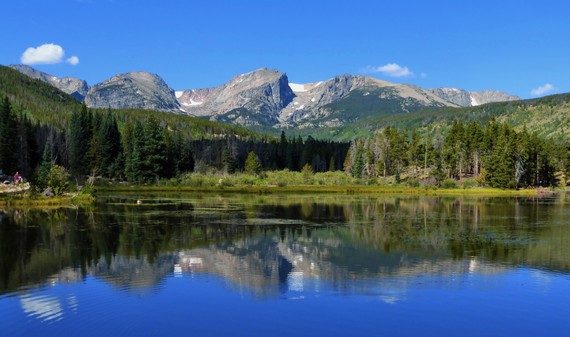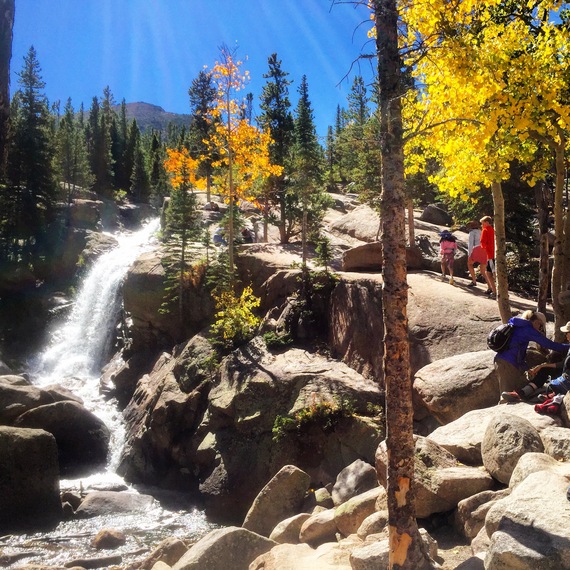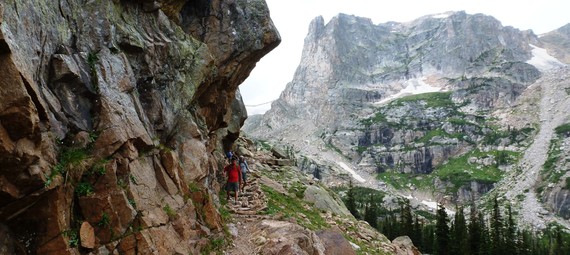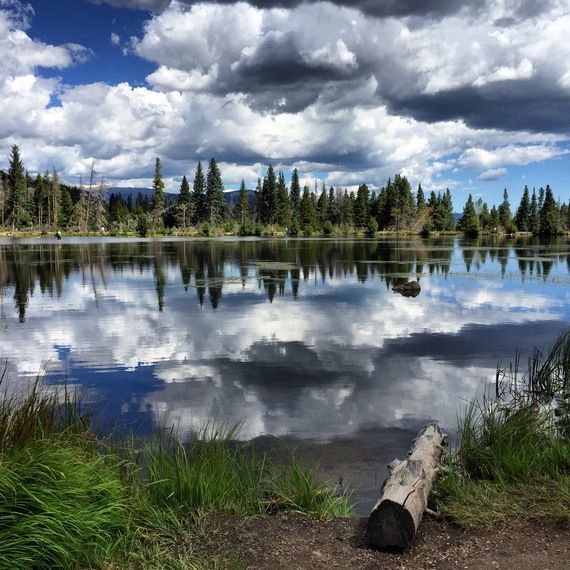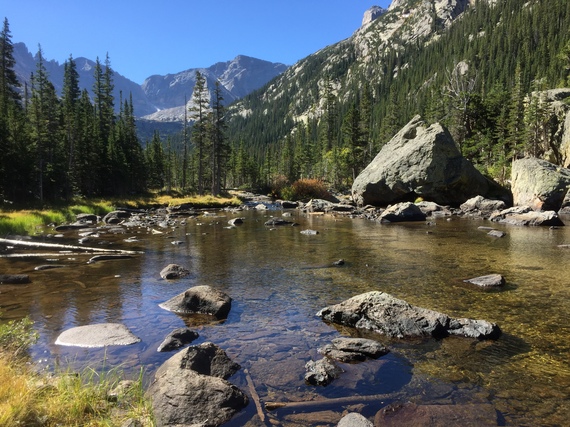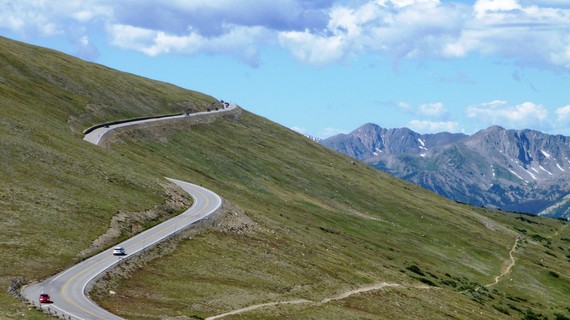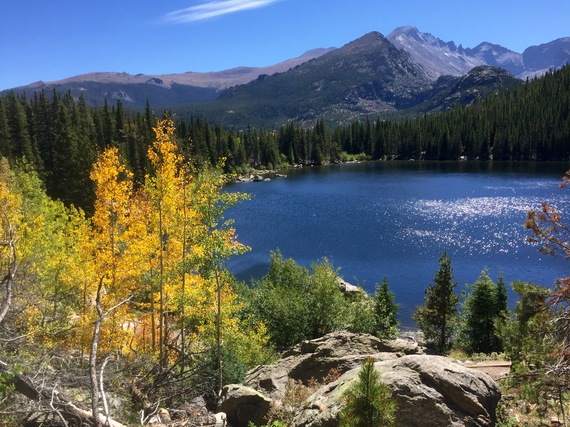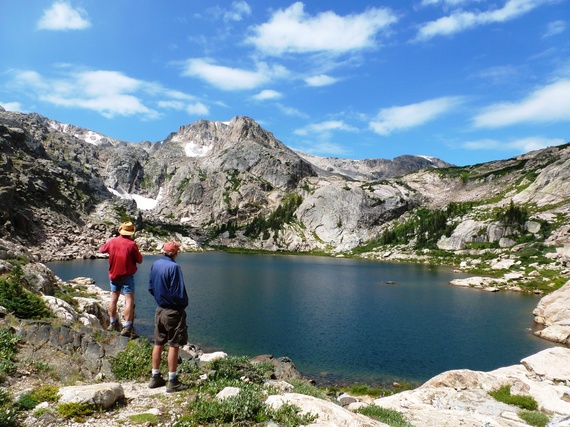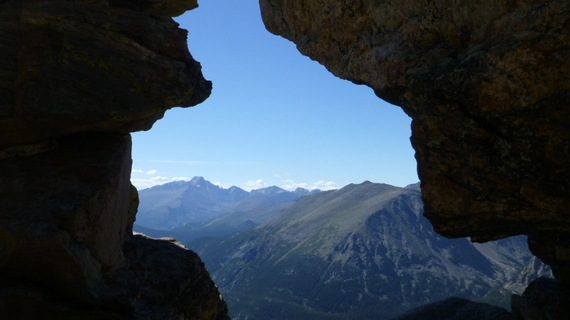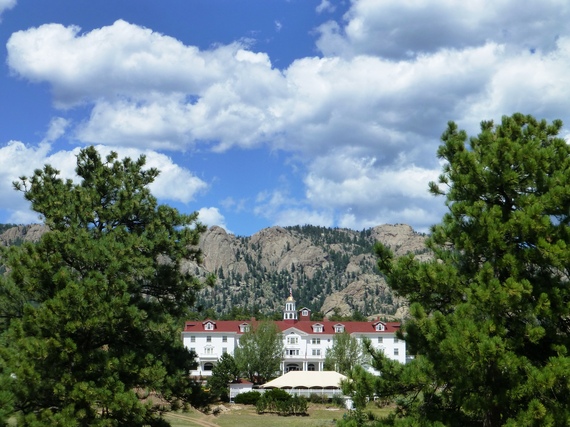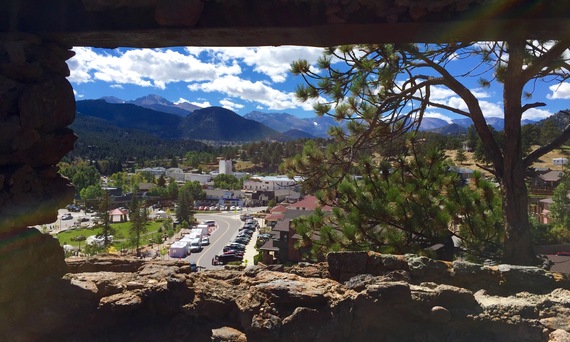The Rocky Mountains of North America are the second longest mountain range in the world, running in a ragged line for 3,000 miles from British Columbia in Canada all the way southeast to the north of Mexico.
So if you're going to have the nerve to give just a small section of this long range the grand name of "Rocky Mountain National Park," well, that better be one special section.
And it is. The 412 square miles of Rocky Mountain National Park have preserved some of America's most pristine natural beauty. America's fifth most popular national park has 147 lakes, 50 miles of streams, 360 miles of trails and more than 100 peaks that soar 11,000 feet or higher into the Colorado blue sky - many of them with snow year-round.
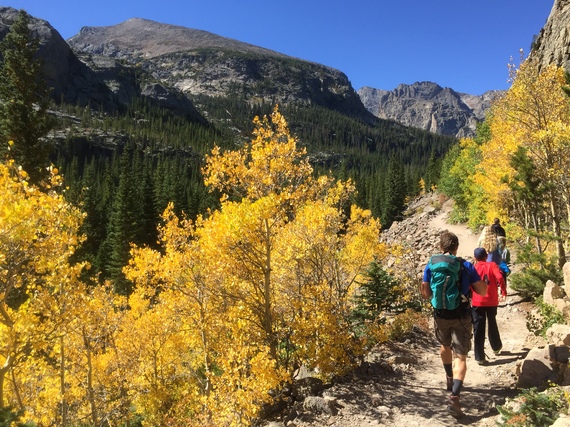
There are a thousand elk, as well as moose, bears, beavers and bighorn sheep. There are waterfalls and wildflowers, and more than a third of the park is tundra - that strange and harsh land above the trees where it is almost always winter.
But as beautiful and tranquil as Rocky Mountain National Park can be, it can also be one of the most congested spots in Colorado. With limited roads and parking, the popular park has to accommodate more than a million people in just six summer weeks. That's more than the population of nearby Denver. Over the course of a year, 3.2 million people visit the park, sometimes "loving" it a little too much. On a recent Saturday in August, a mile-long traffic jam was caused by one sleeping bear, who chose to take his afternoon nap within sight of the road.
Some 35 invasive plants have moved into the park. Global warming is causing the glaciers to melt, and although the lakes and streams are crystal clear, the water is not safe to drink because of Giardia.
And yet, arrive early in the day or in off-season, or get out of the car and hike for a bit, and you can have the place to yourself. Even if you stay in the car, a drive through the park can take you over the highest continuous highway in the world, cruising over the tops of mountains with hundred-mile views in every direction. Just don't concentrate on the views too much - there are sheer cliffs with no guardrails on every turn.
In 2015, the park is celebrating its 100th anniversary of being protected forever. As you picnic by an idyllic stream or hike through a firework display of wildflowers and you want to know who to thank for preserving all this, start with an eccentric Englishwoman named Isabella Bird.
Preserving the Park
There weren't many globetrotting women explorers in the 1870s, but that didn't stop Isabella Bird, who became the first woman accepted into the Royal Geographic Society of Great Britain. From early childhood, she suffered from insomnia and nervous headaches. Her doctor recommended an "outdoor life," so she set off on a series of adventures that ultimately took her to China, Japan, Vietnam, and India. Colorado's dry weather was said to be healthy, so she moved there in 1873.
Isabella roamed 803 miles across Colorado, climbing mountains and riding a horse like a man (though she threatened to sue a newspaper that said she dressed like one). Her descriptive letters home about her explorations in Colorado were eventually published into a book that became one of the classics of travel literature: "A Lady's Life in the Rocky Mountains."
One of her favorite areas was northwest of Denver near a valley that had come to be called Estes Park, after local cattle rancher Joel Estes. "Park" came from the French "parc," meaning "open space."
Isabella explored the area around Estes Park with the aid of a colorful local guide, Jim Nugent, also known as "Mountain Man Jim." He was a one-eyed desperado who would be shot dead a year later, but he was a good-looking character, and there were rumors that he was more than a guide to Isabella. She wrote that Jim was the type of man "any woman might love but no sane woman would marry."
Isabella's descriptions of climbing Longs Peak, the highest mountain looming above Estes Park, and the beauty of the area captivated the world. Even in Colorado, which had a mountainous area five times the size of Switzerland, the splendor of Estes Park became world famous.
Another visitor who settled here was Enos Mills, who became a local guide, climbing Longs Peak more than 250 times. Enos lobbied that the mountains, lakes and streams here should be preserved for future generations. He got his wish in 1915, when Rocky Mountain became America's 10th national park.
Touring the Park Today
With so many experiences (and so many people loving the park) here are some tips on how to enjoy its beauty.
Drive over the 48-mile-long Trail Ridge Road (the highest continuous highway in the world) and stop at the visitor center two miles above sea level. Bring a jacket because it can be 30 degrees colder up here than down in Estes Park. Hike to the top of the ridge to take in a 360-degree view of this moon-like landscape above the trees. Because of heavy snow, Trail Ridge Road is usually open only from late May until mid-September. Snow plows start cutting through the 30-foot high piles of snow in April and it can take six weeks to clear the road.
Hike around Sprague Lake. This is a short, level path around one of the most beautiful lakes in the park.
As you get used to the altitude (at 10,000 feet elevation, there's about 30 percent less oxygen absorbed in your body with each breath) hike to one of the more remote lakes. The farther you go from the parking lot, the less people you will encounter. The most popular hike is to climb from Bear Lake to Nymph, Emerald and Dream lakes. It's about 4 miles roundtrip, with spectacular views. This a very popular section of the park, and relatively crowded.
To get away even more, hike a little farther. Two of the most beautiful lakes are Mills Lake (named after Enos Mills) and the Loch - both about six mile hikes. Bluebird Lake is known for its wildflowers and is about a 12 mile hike.
The ultimate park experience is to be like Isabella Bird and climb Longs Peak. Climbing a fourteener is serious business and requires being in good shape, having a lot of determination, a high tolerance for crowds, and lots of luck with the weather. Every year, some 15,000 people attempt to summit the 14,255-foot Longs Peak; since the 1884, 60 have died in that attempt. The first person known to have reached the top was the one-armed explorer John Wesley Powell, who later became the first man to sail a boat through the Grand Canyon.
For the average person, it's a strenuous, all-day, 16-mile climb that requires starting at 4 a.m. or earlier. As a general rule, you always want to be off the summit and coming down by noon to avoid lightning. Although Longs doesn't require any special mountaineering skills or equipment, there's some bad exposure on the Narrows and the Homestretch parts of the climb, and a fall here could be fatal. Many people wear helmets to protect against rock falls from above. Bring four quarts of water as there is no water on the trail. It's a "long" day, but there's few better feelings than catching a glimpse of Longs Peak in the distance and knowing you have summited it.
Take the Night Ghost Tour at the Stanley Hotel. In 1903, F.O. Stanley, inventor of the Stanley Steamer automobile, moved to Estes Park for his health, and finding the amenities lacking, built a huge summer home in a magnificent setting overlooking the mountains. In 1909, it became the Stanley Hotel. Horror writer Stephen King spent one night in the hotel in 1974, staying in room 217. Because the hotel was closing for the winter (it didn't have heat until 1979), King was the only guest. He wandered the halls alone, and that night had a horrible nightmare about a haunted hotel that quickly turned into the classic horror novel, The Shining. The Stanley makes a lot of this, continuously looping Stanley Kubrick's 1980 film The Shining in every room on closed circuit TV. On the Night Ghost Tour you will learn that many of the rooms are haunted and the hotel has long been known for ghosts and paranormal activity. Perhaps. One thing is for certain, grab a drink and sit on the wicker work rocking chairs on the front porch. The view over the resort village of Estes Park and the surrounding Rocky Mountain National Park is one of the grandest in the world.
If you go: Estes Park has an assortment of riverside cabins and motels, a delightful downtown with riverside cafes, and is located just a few miles from the entrance to the national park. Of course, the top place to stay is the Stanley, but even if you don't sleep here, stop by the gift shop to pick up a brass key ring for room 217.
